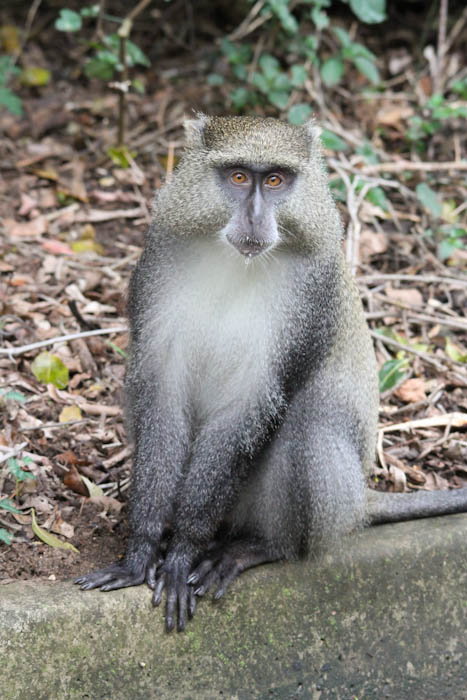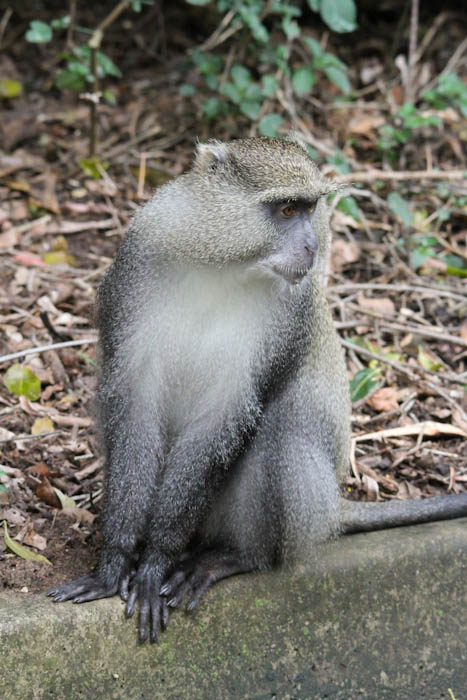


We visited KZN during October this year and arriving at Ndumo Reception, we were informed that if were lucky we will see the Samango Monkeys. Up to then I've never before heard of a Samango Monkey. They are very endangered mainly because of habitat loss. They could have gone extinct before I even knew they existed!
We were in fact so "lucky" that we've seen them on 5 different occasions, (twice at Ndumo, once at Mabibi and twice near Cape Vidal) 4 times I could only get lousy photos of their back sides as they disappeared into the bush, but the last time we saw them near Cape Vidal, I got a few good shots off. One monkey drank water from a puddle in the road, were curious for a second or two and then just disappeared.
SAMANGO MONKEY - Cercopithecus mitus
(Info from – Siyabona Africa)
Appearance
Males are larger than females, males have a mass of 7 to 9 Kg and females 4 to 5 Kg. The tail is a third longer than the body. The coat of the head and the shoulders is dark grey to black. Facial skin, feet, hands and lower limbs are black. Upper limbs and flanks are paler than the shoulders. Belly and throat are a creamy white. The muzzles of males protrude to accommodate the enlarged canines.
Diet
The diet of the Samango Monkey include fruits, insects, flowers, leaves and insects. The Samango male consumes more fruit than the female. While foraging for food it would appear that Samangos start the day by selecting for fruit, and will later in the day take leaves, whereas the day is finished with a combination of fruit and leaves.
Breeding
This primate is a seasonal breeder. Females give birth during the onset of the warm, rainy season. A single young is born after a gestation period of 140 days. Young are carried by their mothers for two to three months, and are finally weaned at the age of nine months. Males compete for the attention of oestrus females. In Samango troops, oestrus is unsynchronised.
Behaviour
Samango Monkeys have a harem social structure, that is a single dominant male lives with his females and their infants and subadults. The social core is formed by related females, who will also defend their territory.
Habitat
Can survive in relatively depauperate swamp forests, inclusive of the deciduous sand forests of northern KwaZulu-Natal, although it is mainly confined to evergreen indigenous forests. Seldom ventures into forest patches smaller than 50-100 ha.
Where they are found
Not widespread or common in South Africa, occurring only in the coastal forests north of St Lucia estuary in KwaZulu-Natal, and in the Afro-montane forests of Mpumalanga. The range extends into similar habitats in neighbouring countries. Another, more southern subspecies, is found in Afro-montane and coastal scrub forests of central and southern KwaZulu-Natal, extending into the Eastern Cape to just north of the Knysna forest. Higher population densities occur at the north coast. The two South African subspecies are only distinguished by colour variances.


